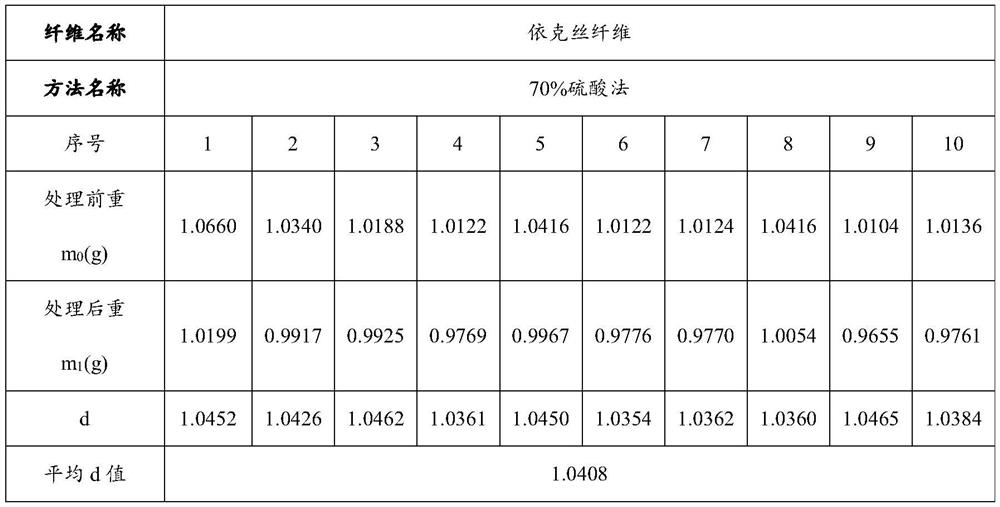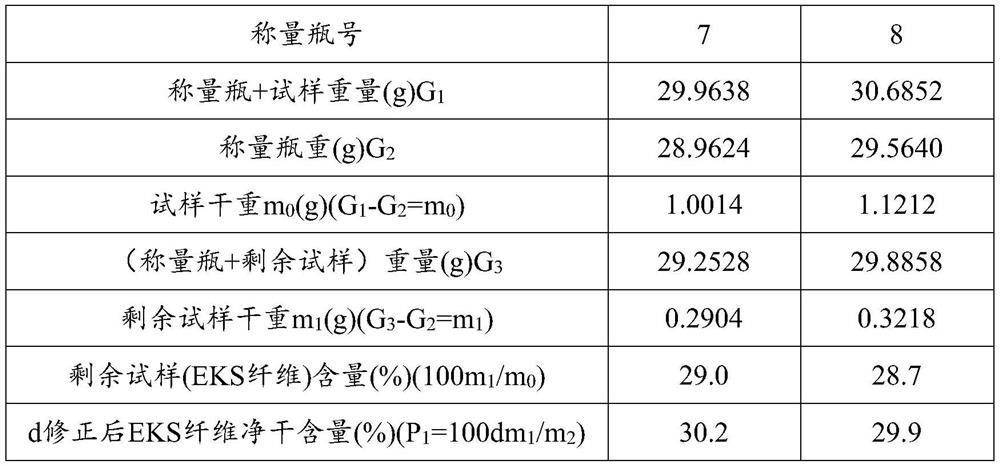A quantitative chemical analysis method for two-component blended fiber products of Yike silk and cotton
A blended fiber and two-component technology, which is applied to the quantitative chemical analysis of blended fiber products, the field of quantitative chemical analysis of two-component blended fiber products of ike silk fiber and cotton fiber, can solve the problem that there is no report of ike silk fiber, no R & D and other problems to achieve the effect of saving procedures, small errors, and good balance
- Summary
- Abstract
- Description
- Claims
- Application Information
AI Technical Summary
Problems solved by technology
Method used
Image
Examples
Embodiment 1
[0034] Embodiment 1: the first group of balance tests
[0035] 1. Reagents
[0036] All reagents are analytically pure, and the test water is the third-grade water in the national standard GB6682.
[0037] 1. Petroleum ether: the heating process is 40-60°C;
[0038] 2. Dilute ammonia solution: add 80mL concentrated ammonia water and dilute to 1L with water;
[0039] 3. Sulfuric acid solution: the mass concentration is 68% to 72%.
[0040] 2. Instrument
[0041] 1. Soxhlet extractor: receiving bottle 250mL;
[0042] 2. Constant temperature oscillator: the temperature adjustment range is from room temperature to 99°C;
[0043] 3. Vacuum pump: the speed is 1400r / min;
[0044] 4. Electric blast drying oven: keep the temperature at 105±3°C;
[0045] 5. Erlenmeyer flask with stopper: capacity 250mL;
[0046] 6. Glass sand core funnel: capacity 30mL ~ 50mL, pore diameter 90μm ~ 150μm;
[0047] 7. Dryer: equipped with color-changing silica gel;
[0048] 8. Weighing bottles, ...
Embodiment 2
[0063] Embodiment 2: the second group of balance tests
[0064] Test data and calculated results are shown in Table 3, and others are the same as in Example 1.
[0065] Table 3 The second group of balance test results
[0066] Weighing bottle number 3 4 Weighing bottle + sample weight (g) G 1
Embodiment 3
[0067] Embodiment 3: the third group of balance tests
[0068] Test data and calculated results are shown in Table 4, and others are the same as in Example 1.
[0069] Table 4 The third group of balance test results
[0070] Weighing bottle number 5 6 Weighing bottle + sample weight (g) G 1
PUM
| Property | Measurement | Unit |
|---|---|---|
| percent by volume | aaaaa | aaaaa |
Abstract
Description
Claims
Application Information
 Login to View More
Login to View More - R&D
- Intellectual Property
- Life Sciences
- Materials
- Tech Scout
- Unparalleled Data Quality
- Higher Quality Content
- 60% Fewer Hallucinations
Browse by: Latest US Patents, China's latest patents, Technical Efficacy Thesaurus, Application Domain, Technology Topic, Popular Technical Reports.
© 2025 PatSnap. All rights reserved.Legal|Privacy policy|Modern Slavery Act Transparency Statement|Sitemap|About US| Contact US: help@patsnap.com



